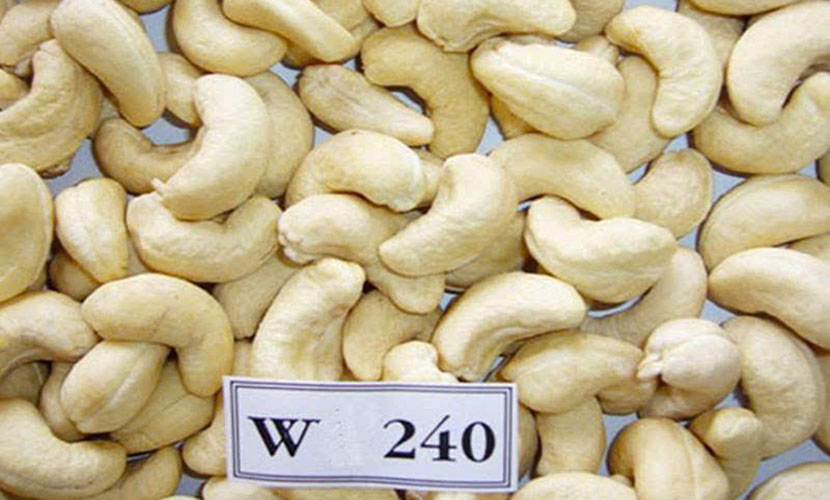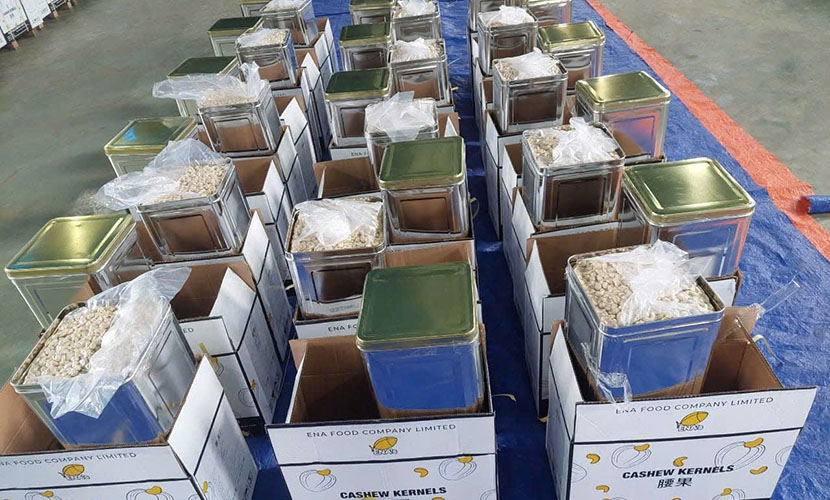
After nine months, Vietnamese cashew exports reached $3.77 billion out of the $4.5 billion target for 2025. With demand sharply increasing, the cashew industry expects to achieve $5 billion if the growth momentum maintains.
In September 2025, Vietnam exported 72.44 thousand tons of cashew nuts, valued at $491.29 million. The export value increased more than 31% compared to the same period last year.
The cumulative volume for the first 9 months reached nearly 554.76 thousand tons, worth $3.77 billion. These figures went up 1.6% in volume and 19.5% in value compared to the same period.
With this result, it needs only $730 million in the last three months to reach the $4.5 billion target set. More positively, there is even potential to exceed $5 billion if the current growth momentum continues.
The average export price of Vietnamese cashew exports in September was $6,781/ton. It slightly went down 0.3% compared to August but still up 3.9% year-on-year. For the 9-month period, the average price was $6,801/ton, 17.6% higher than the same period last year. The increase in export prices is a positive factor helping to raise export value despite only a slight increase in export volume.
China, the United States, the Netherlands, Germany, and UAE continue to be Vietnam’s five largest cashew export markets. These five markets accounts for over 58% of total export volume of Vietnamese cashew nuts.
Among them, China stands out as the main driver of growth. In September alone, this market imported 17.3 thousand tons, valued at nearly $111 million. It showed an increase of more than 41% in both volume and value compared to the previous month.
Cumulatively for nine months, exports to China reached 125.69 thousand tons, equivalent to $797.42 million. They went up 37.4% in volume and 54.1% in value compared to the same period.

Vietnamese cashew exports
Conversely, exports to the United States, although improved compared to August, remain much lower than in 2024. In September, Vietnam exported 12.76 thousand tons to the United States, worth $83.7 million. The export value increased nearly 9% compared to the previous month.
However, cumulatively for nine months, exports to this market reached 107.51 thousand tons, worth $721.28 million. They went down 28.8% in volume and 17.3% in value compared to the same period.
According to Mr. Huyen, Vice Chairman of the Vietnam Cashew Association, the US’s retaliatory tariffs have caused a sharp decline in Vietnamese cashew exports to this market. However, strong export growth to China has helped offset this shortfall.
“Recently, there has been information that the United States reduced retaliatory tariffs to 0% on agricultural products that they cannot produce, such as coffee, pepper, and cashews. However, Vietnam and the United States are still in negotiation processes. Therefore, no official changes have been made,” Mr. Huyen said.
Mr. Huyen added that currently, Vietnam’s cashew nuts exported to the US are subject to a 20% tariff. For contracts already signed, importers still receive goods under the old terms. New contracts will be adjusted according to market prices.
“In essence, the high tariff rate makes Vietnamese goods less competitive. However, demand for Vietnamese cashew exports in the United States remains very large. During peak demand periods, prices for 320–240 grade cashews reached as high as $5/kg, and they still imported steadily.

Vietnamese cashew packing
Currently, prices are only $3.2/kg, adding the 20% tariff brings it to about $3.7/kg. This is a reasonable price level that US’s consumers still accept,” he analyzed.
When import tariffs increase, the parties in the supply chain will balance costs among themselves. Ultimately, American consumers should bear the higher costs. However, high tariffs cause Vietnam’s cashew industry to operate less efficiently because tariff rates vary between countries. Specifically, countries with higher tariffs face difficulties developing.
“Countries with low tariff incentives have advantages in investment and market expansion. In the meanwhile, those facing heavy tariffs struggle due to reduced competitiveness,” Mr. Huyen added.
In the last months of the year, US importers may increase purchases again. However, many are still waiting for the results of tariff negotiations to formulate appropriate import strategies.
According to sources from US partners, nut consumption in the market remains stable. Nevertheless, importers are temporarily reducing purchases to clear large inventories from the previous year. If tariff policies are adjusted positively, import demand from the United States will increase strongly.
Meanwhile, the Chinese market is experiencing a sudden surge in demand. “Nut consumption at enterprises has increased this year, with some businesses increasing consumption by up to 80%. Vietnamese enterprises secured export orders until the end of the year and have enough raw materials for production until the new harvest,” Mr. Huyen shared.
With the current export growth momentum, Vietnam’s cashew industry has grounds to believe that export turnover in 2025 could reach $5 billion. This will be an important step in consolidating Vietnam’s position as the world’s number one cashew exporter. It will also create new momentum for high-value processed agricultural products amid the gradual recovery of global trade.
Vietnamese source: https://thitruongtaichinhtiente.vn/xuat-khau-hat-dieu-tang-toc-co-the-vuot-moc-4-5-ti-usd-nam-2025-72265.html
